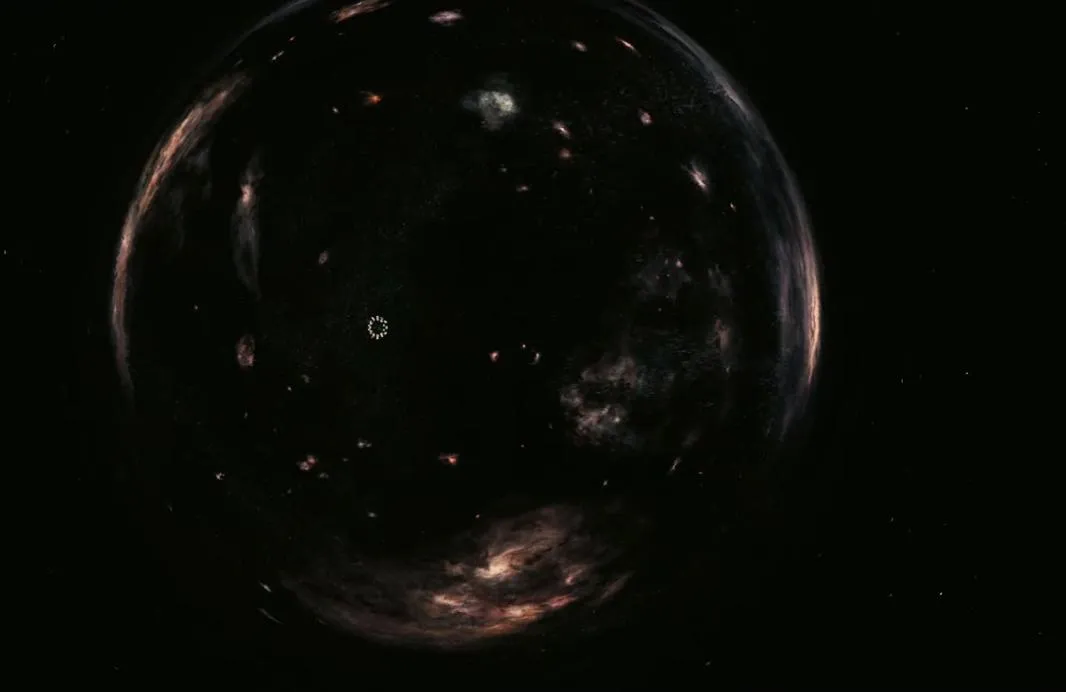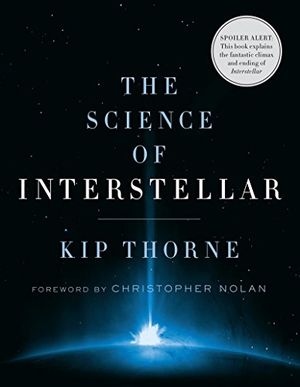Would Astronauts Survive an Interstellar Trip Through a Wormhole?
Well, it depends on your definition of “wormhole” …
:focal(780x399:781x400)/https://tf-cmsv2-smithsonianmag-media.s3.amazonaws.com/filer/79/9d/799dd088-1f15-47f6-84f7-360496649d8e/interstellar-equations.jpg)
In the space opera Interstellar, astronauts seeking to save humanity have found a lifeline: a wormhole that has mysteriously appeared next to Saturn. The tunnel through spacetime leads to a distant galaxy and the chance to find habitable planets that humans can colonize. The movie's wormhole is based on real physics from retired CalTech professor Kip Thorne, an astrophysics pioneer who also helped Carl Sagan design his wormhole for the novel Contact. The visualizations are stunning and are being hailed as some of the most accurate simulations of wormholes and black holes in film. But there is one aspect of plunging into an interstellar express that the film doesn't address: How do you survive the trip?
Although they didn't call it such, the original wormhole was the brainchild of Albert Einstein and his assistant Nathan Rosen. They were trying to solve Einstein's equations for general relativity in a way that would ultimately lead to a purely mathematical model of the entire universe, including gravity and the particles that make up matter. Their attempt involved describing space as two geometric sheets connected by "bridges," which we perceive as particles.
Another physicist, Ludwig Flamm, had independently discovered such bridges in 1916 in his solution to Einstein's equations. Unfortunately for all of them, this "theory of everything" didn't work out, because the theoretical bridges did not ultimately behave like real particles. But Einstein and Rosen's 1935 paper popularized the concept of a tunnel through the fabric of spacetime and got other physicists thinking seriously about the implications.
Princeton physicist John Wheeler coined the term "wormhole" in the 1960s when he was exploring the models of Einstein-Rosen bridges. He noted that the bridges are akin to the holes that worms bore through apples. An ant crawling from one side of the apple to another can either plod all the way around its curved surface, or take a shortcut through the worm's tunnel. Now imagine our three-dimensional spacetime is the skin of an apple that curves around a higher dimension called "the bulk." An Einstein-Rosen bridge is a tunnel through the bulk that lets travelers take a fast lane between two points in space. It sounds strange, but it is a legit mathematical solution to general relativity.
Wheeler realized that the mouths of Einstein-Rosen bridges handily match descriptions of what's known as a Schwarzschild black hole, a simple sphere of matter so dense that not even light can escape its gravitational pull. Ah-ha! Astronomers believe that black holes exist and are formed when the cores of exceedingly massive stars collapse in on themselves. So could black holes also be wormholes and thus gateways to interstellar travel? Mathematically speaking, maybe—but no one would survive the trip.
In the Schwarzschild model, the dark heart of a black hole is a singularity, a neutral, unmoving sphere with infinite density. Wheeler calculated what would happen if a wormhole is born when two singularities in far-flung parts of the universe merge in the bulk, creating a tunnel between Schwarzschild black holes. He found that such a wormhole is inherently unstable: the tunnel forms, but then it contracts and pinches off, leaving you once more with just two singularities. This process of growth and contraction happens so fast that not even light makes it through the tunnel, and an astronaut trying to pass through would encounter a singularity. That's sudden death, as the immense gravitational forces would rip the traveler apart.
"Anything or anyone that attempts the trip will get destroyed in the pinch-off!" Thorne writes in his companion book to the movie, The Science of Interstellar.
There is an alternative: a rotating Kerr black hole, which is another possibility in general relativity. The singularity inside a Kerr black hole is a ring as opposed to a sphere, and some models suggest that a person could survive the trip if they pass neatly through the center of this ring like a basketball through a hoop. Thorne, however, has a number of objections to this notion. In a 1987 paper about travel via wormhole, he notes that the throat of a Kerr wormhole contains a region called a Cauchy horizon that is very unstable. The math says that as soon as anything, even light, tries to pass this horizon, the tunnel collapses. Even if the wormhole could somehow be stabilized, quantum theory tells us that the inside should be flooded with high-energy particles. Set foot in a Kerr wormhole, and you will be fried to a crisp.
The trick is that physics has yet to marry the classical rules of gravity with the quantum world, an elusive bit of mathematics that many researchers are trying to pin down. In one twist on the picture, Juan Maldacena at Princeton and Leonard Susskind at Stanford proposed that wormholes may be like the physical manifestations of entanglement, when quantum objects are linked no matter how far apart they are.
Einstein famously described entanglement as "spooky action at a distance" and resisted the notion. But plenty of experiments tell us that entanglement is real—it's already being used commercially to protect online communications, such as bank transactions. According to Maldacena and Susskind, large amounts on entanglement change the geometry of spacetime and can give rise to wormholes in the form of entangled black holes. But their version is no interstellar gateway.
"They are wormholes which do not allow you to travel faster than light," says Maldacena. "However, they can allow you to meet somebody inside, with the small caveat that they would both then die at a gravitational singularity."
OK, so black holes are a problem. What, then, can a wormhole possibly be? Avi Loeb at the Harvard-Smithsonian Center for Astrophysics says our options are wide open: "Since we do not yet have a theory that reliably unifies general relativity with quantum mechanics, we do not know of the entire zoo of possible spacetime structures that could accommodate wormholes."

There's still a hitch. Thorne found in his 1987 work that any type of wormhole that is consistent with general relativity will collapse unless it is propped open by what he calls "exotic matter" with negative energy. He argues that we have evidence of exotic matter thanks to experiments showing how quantum fluctuations in a vacuum seem to create negative pressure between two mirrors placed very close together. And Loeb thinks our observations of dark energy are further hints that exotic matter may exist.
"We observe that over recent cosmic history, galaxies have been running away from us at a speed that increases with time, as if they were acted upon by repulsive gravity," says Loeb. "This accelerated expansion of the universe can be explained if the universe is filled with a substance that has a negative pressure … just like the material needed to create a wormhole." Both physicists agree, though, that you'd need too much exotic matter for a wormhole to ever form naturally, and only a highly advanced civilization could ever hope to gather enough of the stuff to stabilize a wormhole.
But other physicists are not convinced. "I think that a stable, traversable wormhole would be very confusing and seems inconsistent with the laws of physics that we know," says Maldacena. Sabine Hossenfelder at the Nordic Institute for Theoretical Physics in Sweden is even more skeptical: "We have absolutely zero indication that this exists. Indeed it is widely believed that it cannot exist, for if it did the vacuum would be unstable." Even if exotic matter was available, traveling through it may not be pretty. The exact effects would depend on the curvature of spacetime around the wormhole and the density of the energy inside, she says. "It is pretty much as with black holes: too much tidal forces and you get ripped apart."
Despite his ties to the film, Thorne is also pessimistic that a traversable wormhole is even possible, much less survivable. "If they can exist, I doubt very much that they can form naturally in the astrophysical universe," he writes in the book. But Thorne appreciates that Christopher and Jonah Nolan, who wrote Interstellar, were so keen to tell a story that is grounded in science.
“The story is now essentially all Chris and Jonah's,” Thorne told Wired in an exclusive interview. “But the spirit of it, the goal of having a movie in which science is embedded in the fabric from the beginning—and it's great science—that was preserved.”


